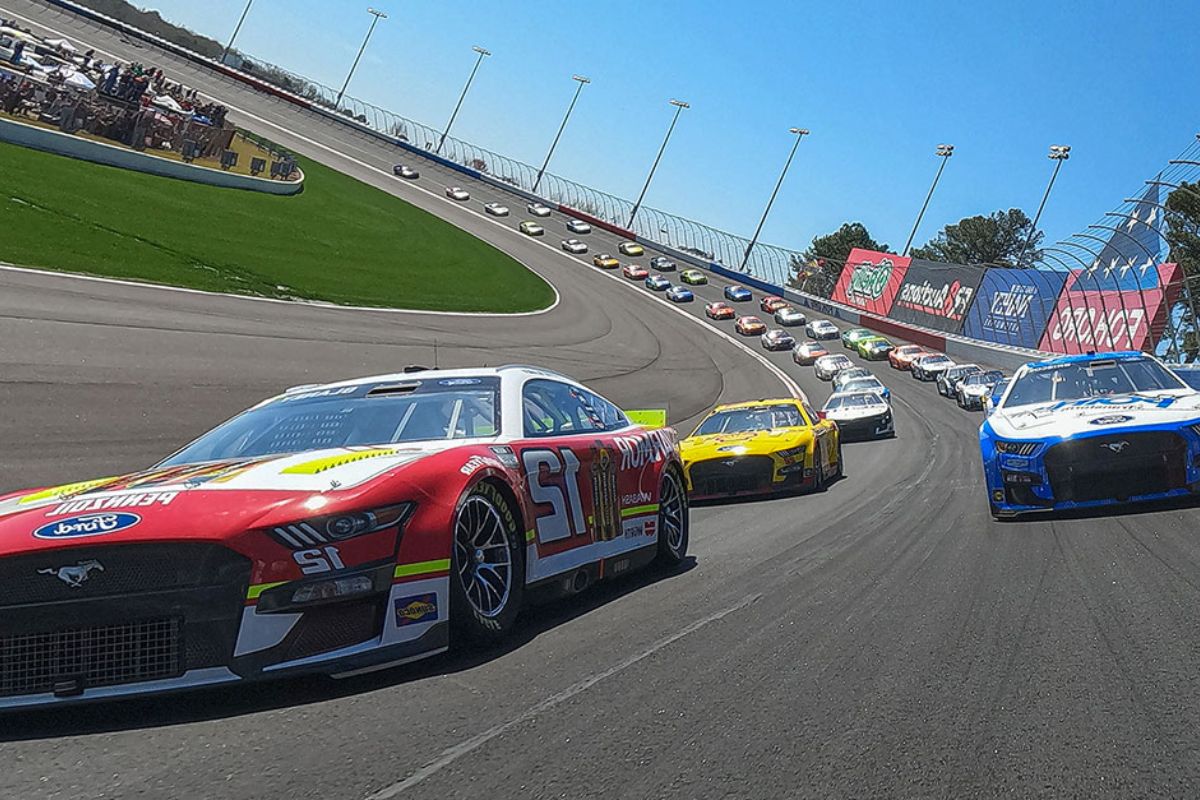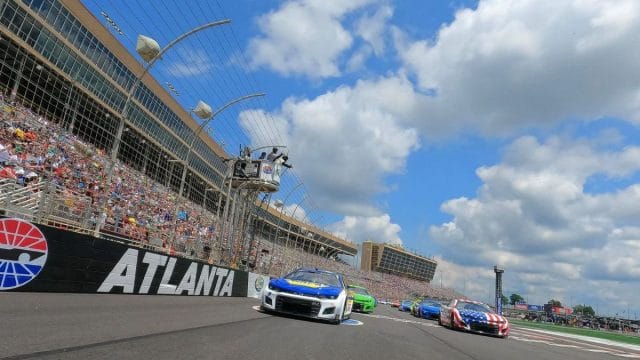NASCAR’s Home-Track Advantage: As NASCAR continues to evolve with the introduction of the Next Gen car, the question of a home-track advantage looms large.
The recent trends and statistics surrounding drivers’ performances at their home tracks have sparked debates among fans and experts alike.
Is familiarity with a track enough to secure a win, or are there more complex factors at play?
The intersection of skill, strategy, and track dynamics brings a fascinating dimension to this discussion, shedding light on whether the home-track advantage truly holds the key to success in NASCAR’s competitive landscape.
Home-Track Advantage: Does It Really Matter in NASCAR?
Does the home-track advantage truly impact a driver’s performance in NASCAR, or is it becoming less significant in the Next Gen era? The heightened anticipation surrounding Chase Elliott at Atlanta Motor Speedway and his 12-1 odds to win beg this question. While historically, Next Gen era winners in their home states are a rarity, recent trends show a different story. Over the past two seasons, there have been 15 instances of drivers securing top-five finishes at their home tracks. This shift raises the intriguing possibility that the Next Gen car might be leveling the playing field in NASCAR.
In analyzing the evolving dynamics of home-track advantage, it is essential to consider whether the new car design is reshaping the traditional advantages that drivers once enjoyed. The data suggests that while home-track wins may not be as prevalent as before, the influence of driving in familiar territory still holds significance in NASCAR. As the sport continues to adapt to changes brought about by the Next Gen era, understanding the nuances of home-track advantage becomes increasingly crucial for drivers and fans alike.

The Impact of Next Gen on Home-Track Wins
The advent of the Next Gen era in NASCAR has brought about a noticeable shift in the frequency and significance of home-track victories, raising questions about the traditional advantages drivers once held in familiar territories. In this new era, where parity is a key focus, the impact on home-track wins is evident:
- Sparse Home-Track Victories: With only three home-track wins in the Next Gen era, the dominance previously associated with familiar tracks has significantly declined.
- Parity in Victory Lane: Analyzing the last two seasons reveals a pattern of diverse winners, showcasing the Next Gen strategy’s aim for equality across the series.
- Diminished Traditional Advantage: The dwindling number of home-track victories in 2023 compared to the previous generation signals a potential transformation in the dynamics of NASCAR racing, challenging the conventional belief in the advantage of racing on familiar grounds.
The Next Gen car’s impact on home-track wins raises intriguing questions about the evolving landscape of NASCAR and the intended direction of the sport towards greater competition and equality.
The Road to Parity: Next Gen Car’s Evolution
Embarking on a transformative journey, the evolution of the Next Gen car in NASCAR signifies a strategic shift towards achieving greater parity within the racing series. The implementation of the Next Gen car was a significant step in NASCAR’s pursuit of parity. While complete equality on the track may not be immediate, the past season has shown promising signs of progress. The absence of home-track winners in 2023 has sparked speculation, with eyes on the 2024 season to see if this trend continues, potentially marking a turning point in the sport.
| Aspect | Impact |
|---|---|
| Technological Advances | Enhanced performance capabilities |
| Cost Reduction | Making competition more accessible |
| Driver Safety | Improved protection and well-being |
| Racing Experience | Closer, more thrilling races |
| Environmental Impact | Embracing sustainability initiatives |
As NASCAR continues to make ongoing adjustments to promote parity, the evolution of the Next Gen car remains central to the sport’s future. Whether true parity is achieved or not, the passion of fans, like those cheering for Elliott at Atlanta, will always be a constant in NASCAR’s legacy.

News in Brief
NASCAR’s Home-Track Advantage Under Scrutiny: The impact of a home-track advantage in NASCAR is a subject of debate as the Next Gen car era unfolds. Recent trends suggest a shift in dynamics, with only three home-track victories since the Next Gen era began. Parity in victory lane and a diminished traditional advantage raise questions about the evolving landscape. The Next Gen car’s role in achieving greater equality and competitiveness is evident, with technological advances, cost reduction, and enhanced safety contributing to the transformative journey. As NASCAR aims for increased parity, the Next Gen car’s evolution signals a potential turning point, challenging conventional beliefs about the advantage of racing on familiar grounds.
Our Reader’s Queries
Q. How is a winner determined in NASCAR?
A. Under the revamped playoff system, the driver accumulating the most points over the final 10 races was crowned the champion. The playoff format introduced three elimination rounds, each featuring a cut where the bottom four drivers were ousted from title contention. After the third race following each cut, the field narrowed until the championship race featured the top contenders.
Q. Why Formula 1 is better than NASCAR?
A. These vehicles are significantly lighter and faster than regular stock cars, bearing little resemblance to everyday vehicles. Teams are tasked with constructing these cars from scratch, and success in races is often linked to the amount of money invested in perfecting the aerodynamics of the vehicles.
Q. Is Gran Turismo NASCAR or Formula 1?
A. The cars featured in the Gran Turismo series are modeled after the Cup Series cars. Key events on the NASCAR Cup Series schedule include prestigious races such as the Daytona 500, the Coke Zero 400 (previously Pepsi 400) at Daytona International Speedway, and the Brickyard 400 at Indianapolis Motor Speedway (held until 2020).
Q. Can a NASCAR beat a Formula 1 car?
A. In precise terms, a NASCAR car accelerates from 0 to 60 mph in 3.4 seconds, whereas an F1 car achieves 90 mph in just 2.1 seconds. In a standing start race, the Formula One car would swiftly distance itself from the NASCAR car due to its rapid acceleration.
ALSO READ: NASCAR Next Gen Car Inspection: Unveiling the Precision Behind Pre-Race Scrutiny
